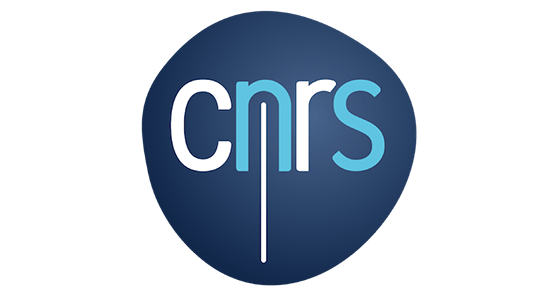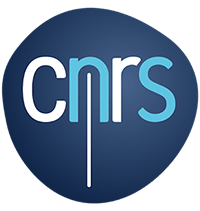CNRS Images


The production team no longer has to spend their valuable time figuring out how and where to find content or dig for the information they need to locate files. CatDV is instant, it’s centralized, and it makes things easy to find.

CNRS Images

CNRS Images: CatDV is Instant, Centralized, and Makes Content Easy to Find
In 2015, DID TECHNOLOGY won the tender with CNRS Images to deploy the CatDV media asset management tool throughout the entire production chain. Eighteen months after CNRS Images went live with CatDV, we checked in with the company’s Stéphane Rossi. He spoke to us in detail about the drivers for the project, the reasons for choosing a MAM system, and the installation experience with the DID team. He also described how the tool improves daily operations and helps all employees and describes how CNRS Images uses one of the most powerful components of the CatDV software suite, the Worker Node.
Testimonial by Stéphane Rossi:
CNRS Images is an audiovisual service of CNRS whose main mission is to promote the activity of the scientific community.
CNRS Images consists of a production service, a broadcasting service, a video library, and a photo library.
Currently, we have about 2,000 digitized films in our video library and lots of pictures in the photo library.
I joined CNRS Images as media manager, after receiving a professional license for a digital audiovisual system.
What Were Your Drivers for Adopting a MAM Solution Following the Migration to File Based Workflows?
Previously, the data was divided into rushes in the different departments, so I had no organization or understanding of the management that had been done immediately upstream. We faced a need to standardize, centralize, and organize internal company data for the whole production chain, from capture to distribution. Following the digital migration, the production department was able to take immediate advantage of the benefits of digital capture, but we hadn’t thought about how to handle incoming files that had originally been tape-based but are now in digital file formats.
As we developed the processes for managing and centralizing files to provide shared access to different users, one of our biggest priorities was to effectively manage the archiving side of data backup. At the same time, we wanted to integrate a MAM to manage the data throughout every step in our production chain: editing, mixing, calibration, distribution, and archiving.
What Were Your Initial Requirements for MAM?
We needed to be able to view all media and give the production departments immediate access to all of the rushes, with a search tool that could make content access fast and easy. At the same time, the tool needed to provide multi-level security according to different users’ functions at CNRS Images. Therefore, I proposed that we adopt a MAM for media management that could provide direct access not only for production but also the rushes.
After evaluating various tools on the market, and taking into consideration our budget and production capacity, we chose CatDV. Today, the tool meets all of our needs and even allows us to include other departments as we learn more about CatDV’s capabilities.
How Does CatDV Enhance Your Daily Operations?
Our operation improved vastly at the moment we installed a management system with a database behind it. Now, we have immediate access to all information for all our media, and it’s very easy to find the exact location of files. Previously, our most common difficulty was in locating a film or media file since we had to rely on static lists or the collective memory of our various stakeholders, directors, editors, and other personnel.
Now, CatDV allows us to have access to this information directly via an internal tool, and also via the web. The production team no longer has to spend their valuable time figuring out how and where to find content, or dig for the information they need to locate files. CatDV is instant, it’s centralized, and it makes things easy to find.
Today we use a CatDV process that allows us to access the various rushes that have been indexed in the tool. A CatDV search form gives us immediate access to the right image according to a given query.
Another helpful CatDV feature is the “pickling“ for developers. After the rushes are ingested into a specific CatDV catalog, developers can access them early in the workflow, make decisions about their use, and then export the rushes to various assembly stations regardless of the software used.
Another CatDV advantage is the Web Client. In addition to CatDV’s internal desktop client, the web client gives all users access to content via the company intranet or the internet. This lets non-production users within the company, such as researchers or management, access essential basic features via their web browsers.
How Do You Use CatDV’s Worker Node Automation Tool?
The tool is very powerful because it enables us to automate a set of processes. We typically had the following types of needs: encoding in specific formats. Today there are presets for encoding that allow us to immediately encode without needing third-party tools or special knowledge of the CODEC or encoding. We launch encodings depending on the quality of broadcasts and drop them anywhere on the network to make them available to different people.
Another advantage of this famous “WORKER” is being able to automate a variety of processes that are usually done by humans, which can limit the error factor. It also allows us to automate a set of process that are triggered automatically by specific events. The WORKER detects the file in question, starts encoding, moves it in a repertory destined to the fully automatic mixer.
How Do You Manage Deep Archiving?
One of the big problems we had was to provide an efficient archiving system that fits in our budget, so we naturally choose a complete server solution (with robotic backup Library) on LTO6. So it allowed us to have a technical architecture throughout the production chain that covered media management to archiving via robotic backup library and server.
Why did you choose DID TECHNOLOGY?
It is natural that we chose DID TECHNOLOGY as they allowed us to address all these issues. Through CatDV they offered a media management and archive management tool. They have responded to our support problems, and the reactivity was a significant factor since DID has always responded when I asked them for a technical problem, updates or solutions.


